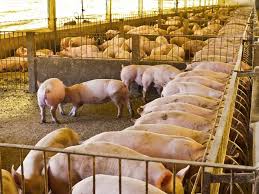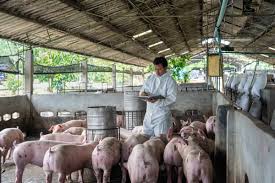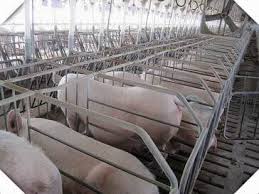Pig farming business is one of the most lucrative agribusinesses around the world and pigs are kept in one form or another almost everywhere in the world. In rural areas of many parts of the world, it is still common to find pigs rooting and roaming freely around communities, such pigs are sold or slaughtered as the need arises.
Pig-keeping enterprises are also found in and around towns and cities, and they play an important role in feeding the urban population.
Taxonomy (Biological Classification)
Below is the taxonomy of the pig:
Kingdom – Animalia
Phylum –Chordata(Animas with back bones)
Class –Mammalia(Warm blooded animals that suckle their young)
Order – Artiodacty(Even toed hoof)
Family – Suidae(non-ruminant or single stomach system)
Genus – Sus(Restricted wild European boars with which domestic pigs are bred from)
Specie – SusScrofaand susVitatus
Advantages of Pig Farming

Pigs are highly prolific: They are capable of producing large litters (young ones) after a relatively short gestation period. They also have a short generation interval and grow fast.
Their productivity in terms of yield of meat per tonne of live weight of breeding female per year is six times that of cattle.
Their body size makes them more flexible for marketing and consumption compared to cattle.
Pig meat is suitable for processing and some of the processed products have a longer shelf life than fresh meat, and can thus be distributed to a wider section of the population.
Pigs convert feed to meat efficiently. They convert feed to meat twice as efficiently as ruminants (i.e. they have high feed efficiency).
Pig production provides quick turn-over on investment compared to cattle.
Curative and preventive drugs are available for most swine diseases.
Pigs also give useful by-product like their faeces can be used as a good source of manure.
Pigs can be reared almost anywhere given suitable housing and management although their management in extreme temperature can be expensive.
They produce meat without contributing to the deterioration of the natural grazing land. This is important considering the steady desertification, soil erosion and loss of productive land in some areas of the tropics.
Disadvantages of Pig Farming
There is poor product acceptance in areas where the Islamic religion prevails. In other words, there is strong taboo against the eating of pig product, thereby negatively affecting the market for the products e.g. the Middle East, Pakistan and parts of Africa.

Muslims and many Zionist in the Jewish faith are forbidden to eat pork. Meat from pig is referred to as pork. While social factors play an important role in their acceptance, pig has historically been considered an unclean animal, wallowing in filth, an object of dislike and a risk to human health.
Read Also : Complete Piglets Management Tips and Care Guide
The digestive tract of pigs and birds is relatively short compared to other farm animals and can only utilize high quality concentrate feeds (e.g. staple grains and oilseeds). These are also use as feed for human making them to be in direct competition with man.
They are raised close to human habitations thereby making their waste product a pollution problem.
Common Terminologies in Pig Husbandry

Boar: Mature uncastrated male.
Barrow: Mature castrated male before puberty.
Hog: Castrated male.
Stag: Adult male castrated later in life.
Shoat: Swine of both sex weighing 30-80kg.
Gilt: Young female swine before farrowing.
Sow: Adult or mature female after one or two pregnancies.
Barrener: Sterile female.
Farrow: Giving birth to young ones.
Herd: Group of swine.
Litters: Young ones (piglets).
In summary, the production of pigs in the tropics contributes significantly towards meeting the demand for animal protein. Pork is consumed by a large group of people even though there is some religious taboo limiting its consumption.
Advantages of pig farming include: the potential to be highly prolific, body size makes them more flexible for marketing and consumption compared to cattle.
Pig meat is suitable for processing and the processed products have a longer shelf life than fresh meat, efficient feed converters, useful by-product etc.
While their disadvantages include poor product acceptance, social and religious factors, pollution etc. Also some common terminologies used in pig production were define.
Read Also : General Impact of Wastes on Environment

